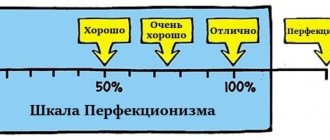See also: Cognitive psychotherapy
Cognitive psychology
(Latin cognitio “knowledge”) - psychology focused on experimentation and mathematical modeling of thinking. A branch of psychology that studies cognitive processes such as memory, attention, feelings, information representation, logical thinking, imagination, and decision-making abilities[1][2]. Many principles of cognitive psychology underlie modern psycholinguistics. The findings of cognitive psychology are widely used in other areas of psychology, in particular social psychology, personality psychology, educational psychology, as well as in the construction of artificial intelligence systems.
Representatives of cognitive psychology: George Miller, Jerome Bruner, Ulrik Neisser, Simon Herbert, Allen Newell, Karl Pribram, Robert Solso, George Sperling, Boris Velichkovsky[3][4].
Story
The formal beginning of cognitive psychology dates back to September 11, 1956, when a special group of the Institute of Electrical and Electronic Engineering devoted to information theory met at the Massachusetts Institute of Technology. This meeting is believed to have marked the beginning of the cognitive revolution in psychology. Among those present were George Miller, Herbert Simon, Newell Allen, Noam Chomsky, David Greene and John Sweets.
B. M. Velichkovsky sets out the history of cognitive psychology in the following main theses.[5]
Cognitive psychology is a product of the influence on psychology of advances in related technical disciplines such as engineering psychology and ergonomics. The formation of cognitive psychology was greatly influenced by the need for psychological support for learning processes and in research on the intellectual development of children (Bühler, Vygotsky, Piaget). These problems could not be solved within the framework of the system, which was outdated by the 1960s. behaviorism, based on experiments with animals and the assumption that people behave the same way.
Cognitive psychology was created by representatives of Gestalt psychology and representatives of neobehaviorism, who understood the limitations of old models and took into account new discoveries. For example, the discovery of cognitive maps by E. Tolman. Representatives of neuropsychology (A.R. Luria and others) made a great contribution to the development of cognitive psychology. All these models acquired an innovative form due to the computer revolution of the 20th century and in connection with the linguistic works of N. Chomsky, who proved that linguistics is reducible to algorithmic models. D. Broadbent developed computer models of sensory perception of information. R. Atkinson (English)Russian modeled human memory processes by analogy with a computer. Practical computer modeling of problem-solving processes as part of work on artificial intelligence began at the Würzburg school. In 1967, W. Neisser wrote the first textbook on cognitive psychology.
Since the possibility of conducting direct research of the brain using such means as MRI, on the one hand, cognitive models have received the opportunity to improve; on the other hand, the question has become whether artificial intelligence behaving like a person should be designed like a person.[6]
Cognitive direction by J. Kelly. Head. Cognitive direction in personality theory: George Kelly
It is a fundamental fact that humans are thinking beings. Indeed, intellectual processes are so self-evident that virtually all personologists today acknowledge in one way or another their impact on human behavior (Fiske & Taylor, 1991; Wyer & Srull, 1984). George Kelly, a practicing clinical psychologist, was one of the first personologists to emphasize cognitive processes as a core feature of human functioning (Jankowitz, 1987). In accordance with his theoretical system, called the psychology of personal constructs, a person is essentially a scientist, a researcher who seeks to understand, interpret, anticipate and control the world of his personal experiences in order to effectively interact with it. This view of man as a researcher underlies Kelly's theoretical constructions, as well as modern cognitive orientation in personality psychology.
Kelly strongly advised his fellow psychologists not to view subjects as passive organisms “reacting” to external stimuli. He reminded them that the subjects behaved in the same way as scientists, drawing conclusions from past experiences and making assumptions about the future. His own theory, highly original and different from the mainstream psychological thinking then prevalent in the United States, was largely responsible for the current wave of interest in studying how people understand and process information about their world. Walter Mischel, a prominent cognitive psychologist, credited Kelly as a pioneer of the cognitive aspect of personality. “What surprised me... was the accuracy with which he foresaw the directions in which psychology would develop over the next two decades. In fact, everything that George Kelly said in the 1950s turned out to be a prophetic premise for the psychology of the 1970s and ... for many years to come" (Mischel, 1980, pp. 85-86). In this chapter, we introduce Kelly's personality construct theory, which illustrates the cognitive approach to personality. Let's start with the biography of George Kelly.
Basic Concepts
One of the approaches in cognitive psychology to modeling memory work.
Cognitive psychology, when constructing models, introduces the following concepts: working memory, long-term memory, perception, attention, language and other metacognitive processes. The goal of cognitive psychology is to understand and model the processes of interaction between these entities as formally as possible, ideally even formulating algorithms for the operation of brain functions. One of the latest process concepts is dual learning processes.
In fact, many connectionists view the brain as a deterministic biocomputer, making cognitive psychology a related science to the development of artificial intelligence. Many algorithmic models, such as the connectionist model and artificial neural network algorithms, are actively used both in cognitive psychology and by artificial intelligence developers. The difference with the latter is that cognitive scientists conduct a lot of experiments on living people and try to make the model correspond to the behavior of living people, and not just solve algorithmic problems.
It should be noted that cognitive scientists do not use any single generally accepted model of the brain, but, as a rule, work in narrow specialized areas such as learning, remembering, reading, etc. with their own local models. Moreover, within the same field of knowledge being studied, different models can compete. For example, the EZ Reader and SWIFT models compete in reading. The goal of a cognitive scientist is to model as accurately as possible the algorithms of the brain in a given type of activity, and not to comply with some abstract principles.
Cognitivism in brief. Cognitivism
Cognitive psychology
The word "cognitive" comes from the Latin word cognitio - knowledge. Psychologists who have rallied around this approach argue that a person is not a machine that blindly and mechanically reacts to internal factors or events in the external world; on the contrary, more is available to the human mind: analyze information about reality, make comparisons, make decisions, resolve problems that confront him every minute. Cognitive theories of personality are based on the understanding of a person as “understanding, analyzing,” since he is in the world of information that needs to be understood, evaluated, and used. A person’s action includes three components: 1) the action itself,
2) thoughts, 3) feelings experienced when performing a certain action. Outwardly similar actions can be different, since the thoughts and feelings that a person experiences are also different.
The subjective interpretation of situations is a truer factor in decision making than the “objective” meaning of these situations. Different people “see” and interpret the situations in which they act differently. Finding himself in a real situation, a person does not have the opportunity to comprehensively analyze the circumstances (little time, lack of knowledge), he needs to decide, the person makes a choice and commits an action (behaviorists complete the analysis of behavior at this point), but the cognitive and emotional part of the action is not yet completed, so how the act itself is a source of information that allows one to formulate or change opinions about oneself or others. Thus, after a reaction, a person, to one degree or another, makes a subjective analysis of his behavior, the degree of its success, on the basis of which he makes the necessary correction or draws some conclusions for the future.
American psychologist Albert Ellis believes that incorrect human behavior is caused primarily by irrational thoughts generated by an “activating situation.” Developing a more objective perception of events in a person leads him to search for new effective solutions. Thus, maladaptive forms of behavior are little by little replaced by new, more effective forms, i.e. modification of thoughts leads to changes in behavior.
Another American scientist, Aaron Beck, pointed out that “how people think determines how they feel and how they act.” Pathological emotional states and inappropriate behavior are the result of “maladaptive” cognitive processes, therefore the goal of cognitive therapy is “to modify dysfunctional beliefs and erroneous ways of processing information.” Beck identified and described the phenomenon of “automatic thoughts”, which are associated with the processing of current information; they are involuntary, fleeting, unconscious and directly lead to emotional and behavioral reactions. Beck notes that in emotional disorders (sadness, anxious affect, increased irritability), automatic thoughts are distinguished by a number of specific features: thus, sadness is put in correspondence with thoughts about loss, anger - thoughts about violating some standard, melancholy - thoughts of negative content about oneself , the world, people, the future (depressive triad), fear - thoughts about external danger and the inability to cope with it due to one’s own insolvency.
The connection between cognitive psychology and neuroscience
Models of cognitive psychology are not built directly on the basis of neurobiological experiments like MRI, since MRI shows the activation of very large and multifunctional areas of the brain that do not allow us to identify the details of mental processes. Cognitive psychologists usually study human behavior using simpler and more clearly interpretable experiments. For example, reading is studied mainly by studying saccades of the eyeball or reading snippets of text. This method of study raises the question of whether the models of cognitive psychology correspond to the achievements of neurobiology, that is, whether the models of cognitive scientists correspond to the real structure of the human brain. The general approach of cognitive psychologists is that if a model explains human behavior well and is consistent with experiments, then neurobiological data are of secondary and auxiliary importance. This empirical approach of cognitive psychologists raises objections from neuroscientists, who appeal to the fact that cognitive scientists essentially create models of artificial intelligence that demonstrate behavior similar to humans, but the human physiology is structured differently inside [6]. On the other hand, the cognitive scientist's approach is directly aimed at satisfying the Turing test criterion. A significant portion of cognitive scientists positively perceive new neurobiological data and apply them at the stage of validating their models. In particular, the theory of dual learning processes is also based on MRI data.
Causes of dissonance
As you already understand, it is impossible to avoid this condition. In addition, there are a lot of reasons for its appearance:
- logical inconsistency;
- inconsistencies in behavior with the samples accepted as the standard;
- contradiction of the situation to past experience;
- the occurrence of disturbances in the habitual pattern of cognitive behavior.
Any item on the list can seriously affect the behavior of a person who begins to actively look for ways out of an unpleasant state. At the same time, he considers several possible algorithms for solving the problem.
Contributions from Karl Pribram
One of the areas of cognitive psychology that is of great interest to scientists is the development of a holographic model of the functioning of the psyche. This model became widely known thanks to the work of Karl Pribram, which was the result of his collaboration with the famous American psychologist and physiologist Karl Spencer Lashley. Pribram assisted him in systematizing the results of studies on resection of part of the brain in animals. As a result of the work done, Pribram concluded that memory and existing skills are preserved in animals that have undergone resection even after large areas of the brain are removed. This means that memory and developed skills are distributed throughout the entire volume of the brain, and are not localized in certain areas of it. Pribram used the work of physicist David Bohm and likened the functioning of memory to a physical hologram. The essence of a hologram is to store in a material medium the results of the interference of two electromagnetic waves that are emitted by coherent sources. One of the sources is a reflection of a certain object, and when these two sources interfere, an interference image is formed in the form of light and dark rings. Illumination of the hologram with a laser beam leads to the appearance of a three-dimensional image of the object recorded in the hologram. The peculiarity of the holographic matrix is that when a part of any size is separated from it, the entire picture is preserved in this part, although less clear. Some provisions of these theoretical constructions were experimentally confirmed by A. Luria, B. Velichkovsky, V. Kucherenko. Although Pribram's holographic model has not received universal acceptance in the scientific community, it is discussed by many prominent psychologists and also plays an important role in transpersonal psychology[3][4][7][8][9].
Concept
Cognitive psychology is understood as a branch of psychology that studies the cognitive processes that occur in the mind of an individual.
Its essence lies in the study of man as a kind of computer , the basis of which is thinking and reason.
It perceives various signals coming from the outside world, perceives and converts them into information, processes, analyzes and organizes it.
The subject of cognitive psychology is the study of such elements as imagination, consciousness, attention, memory, sensation, as well as other thought processes.
Notes
- COGNITIVE PSYCHOLOGY • Great Russian Encyclopedia - electronic version (undefined)
. bigenc.ru. Retrieved December 30, 2020. - American Psychological Association (2013). Glossary of psychological terms (undefined)
. Apa.org. Retrieved August 13, 2014. - ↑ 1 2 Petrenko V.F.
Basic metaphors as a genome (embryo) of a future theory (based on psychological science) // Questions of Philosophy. - 2012. - No. 4. - P. 87-98. - ↑ 1 2 Petrenko V.F.
Basic metaphors as a genome (embryo) of a future theory (based on psychological science) // Bulletin of Moscow University. Episode 14. Psychology. - 2013. - No. 1. - P. 4-23. - [1]
- ↑ 1 2 Tony Stone and Martin Davies.
CHAPTER 20. THEORETICAL ISSUES IN COGNITIVE PSYCHOLOGY // Cognitive Psychology / Edited by Nick Braisby and Angus Gellatly. — 2nd Revised edition. - Oxford University Press, 2012. - P. 674. - 744 p. — ISBN 978-0-19-923699-2. - Adrian Ashman, Robert Conway.
An Introduction to Cognitive Education: Theory and Applications. - Routledge, 2014. - P. 32-34. — 268 p. — ISBN 978-0-415-12839-1. - Druzhinin V. N.
Ontology of mental reality // Scientific Psychological Society named after S. L. Rubinstein at the Institute of Psychology of the Russian Academy of Sciences. - George Schreiner and William J. Lyddon.
Modern and Postmodern Metaphors of Self, Mind and Memory // Cognitive Psychotherapy Toward a New Millennium: Scientific Foundations and Clinical Practice / Tullio Scrimali, Liria Grimaldi (Editors). - Springer Science+Business Media New York, 2002. - P. 39-50. — xxx, 420 p. — ISBN 978-1-4613-5135-1.
Classification
There are many classifications of cognitive impairment. According to the severity and reversibility of the process, the following are distinguished:
Degree of impairmentDescription of symptoms
| Lightweight | Slight deviation of cognitive functions within the age norm. The patient may have complaints that are subjective in nature. Others do not notice significant changes in a person’s behavior. |
| Average | Cognitive impairments are already beyond age limits. The patient complains of increased fatigue, weakness, and irritability. It is difficult for him to perform complex mental work, mono- or multifunctional disorders appear. |
| Heavy | There is complete disadaptation in everyday life. The doctor speaks about the onset of dementia. |
Also, by the loss of certain functions, you can determine the location of the damage:
- Damage to the left hemisphere is characterized by writing and counting disorders (agraphia, acalculia). Apraxia and aphasia may also occur. The ability to read and recognize letters is impaired, and mathematical activity suffers;
- The right hemisphere is responsible for spatial orientation and imagination. Therefore, the patient experiences disorientation in space and time, it becomes difficult for him to imagine or fantasize something;
- Cognitive impairments with damage to the frontal lobes are as follows: the patient cannot formulate and express his thoughts, the ability to remember new information and reproduce old information is lost;
- When the temporal lobes are damaged, a person suffers from the inability to recognize smells and visual images. Also, this part of the brain is responsible for accumulating experience, remembering and perceiving the surrounding reality through emotions;
- When the parietal lobes are damaged, the symptoms can be quite varied: from impaired writing and reading to disorientation;
- Visual analyzers are located in the occipital lobes of the brain, so disorders of this particular sense organ occur.
Methods
The main method of cognitivists is to replace the personal construct. Its development belongs to the American scientist J. Kelly and dates back to 1955, when the new direction had not yet been formed. However, the author’s work has largely become decisive for cognitive psychology.
Briefly, the personality construct is a comparative analysis of how different people perceive and interpret external information. It includes three stages. At first, the patient is given certain tools (for example, a thought diary). They help identify erroneous judgments and understand the causes of these distortions. Most often, they are states of passion. The second stage is called empirical. Here the patient, together with the psychotherapist, practices techniques for the correct correlation of phenomena of objective reality. This is done by formulating adequate arguments for and against, a system of advantages and disadvantages of behavioral models, and conducting experiments. The final step is for the patient to become more aware of his or her response. This is a pragmatic stage.
In short, Kelly’s cognitive psychology (or personality theory) is a description of the very conceptual scheme that allows a person to comprehend reality and form certain patterns of behavior. It was successfully picked up and developed by Albert Bandura. The scientist identified the principles of “observational learning” in behavior modification. Today, the personality construct is actively used by specialists around the world to study depressive states, phobias of patients and identify/correct the causes of their low self-esteem. In general, the choice of cognitive method depends on the type of mental behavioral disorder. These could be methods of decentering (for social phobia), replacing emotions, changing roles, or targeted repetition.
Sources
- https://psyholic.ru/bez-rubriki/kognitivnaya-psihologiya-eto.html
- https://psy-diplom.ru/shpargalki/kognitivnaya-psihologiya/
- https://fb.ru/article/353018/kognitivnaya-psihologiya—kratko-o-glavnom-osnovnyie-polojeniya-istoriya-i-osobennosti
- https://psyholic.ru/bez-rubriki/kognitivizm-eto.html
- https://ODepressii.ru/obschee/kognitivnost.html
[collapse]











